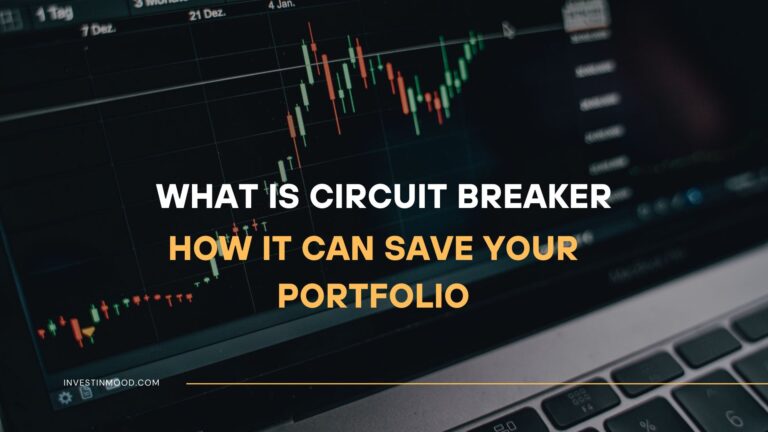
How to Swing Trade Guide to Capturing Market Moves
Swing trading is a popular speculative strategy that aims to capture gains in a financial instrument over a few days to several weeks. It sits perfectly between day trading and long-term investing, offering the potential for significant profits without requiring constant screen time. For active traders in the US, UK, Canada, and Australia, mastering swing trading can be a powerful way to capitalize on short-term market momentum on exchanges like the NYSE, NASDAQ, and LSE.
Summary Table
| Aspect | Detail |
|---|---|
| Definition | A trading strategy that aims to capture short- to medium-term gains in a stock (or any financial instrument) over a period of a few days to several weeks. |
| Also Known As | Momentum Trading, Short-Term Position Trading |
| Main Used In | Stock Trading, Forex, Cryptocurrency, ETFs |
| Key Takeaway | Swing trading seeks to profit from the “swings” or price oscillations within a larger trend, using technical analysis to identify entry and exit points. |
| Related Concepts |
What is Swing Trading
Swing trading is an active trading style where the goal is to capture a chunk of a potential price move. While long-term investors might ride out market volatility and day traders might make dozens of trades in a single session, swing traders typically hold positions for several days or weeks to profit from anticipated upward or downward swings. This strategy primarily relies on technical analysis—the study of price charts, patterns, and indicators—to forecast the direction and magnitude of these swings.
Think of it like surfing: you don’t try to catch every single wave (day trading), nor do you just sit on your board waiting for the perfect swell for hours (long-term investing). Instead, you paddle out, identify a promising wave forming, and ride it for as long as it has momentum before it crashes on the shore.
The Core Concept Explained
The core concept of swing trading is based on the idea that markets do not move in a straight line. Even in a strong uptrend, there are periods of pullbacks or consolidation. Similarly, in a downtrend, there are counter-trend rallies. Swing traders aim to identify the beginning of these smaller moves within the larger trend and exit before the momentum reverses.
They use tools like support and resistance levels to identify potential turning points. A bounce off a support level might signal a buying opportunity for an upward swing, while a rejection at a resistance level might signal a short-selling opportunity for a downward swing. Other key tools include moving averages, the Relative Strength Index (RSI), and MACD to confirm momentum and trend strength.
Key Takeaways
How to Identify a Swing Trade
Since swing trading is a strategy rather than a calculated metric, the process revolves around identification and setup. A typical swing trade is identified through a systematic process of market analysis.
The Swing Trade Identification Process
- Determine the Overall Trend: The first step is to look at the bigger picture. Is the stock, or the general market (like the S&P 500), in an uptrend, downtrend, or ranging? This can be done using higher time frame charts (weekly or daily) and tools like the 50-day and 200-day moving averages.
- Find a Candidate: Look for assets that are showing strength if the trend is up, or weakness if the trend is down. Screeners can help find stocks making new highs or with unusually high volume.
- Identify Entry Point: Wait for a pullback against the main trend. In an uptrend, you wait for the price to dip towards a support level, such as a rising moving average (e.g., the 21-day EMA) or a key Fibonacci retracement level.
- Confirm with Indicators: Use momentum indicators like the RSI or MACD to see if the pullback is losing steam and the main trend is likely to resume. For example, an RSI reading moving back above 30 from an oversold condition during an uptrend can be a confirmation signal.
- Define Exit and Risk: Before entering, you must define your exit points. Where is your profit target (e.g., the next resistance level)? Where is your stop-loss (e.g., below the recent swing low)? This defines your risk-reward ratio.
Example Setup for a US Stock:
- Asset: A company listed on the NASDAQ.
- Trend: Daily chart shows a series of higher highs and higher lows (Uptrend).
- Entry Signal: Price pulls back to the 50-day Exponential Moving Average (EMA) and forms a bullish hammer candlestick pattern. RSI bounces from 40.
- Stop-Loss: Placed just below the recent swing low.
- Profit Target: Set near the previous swing high.
Why Swing Trading Matters to Traders and Investors
Swing trading matters because it offers a unique balance that other strategies do not, appealing to a wide range of market participants.
- For Traders: It provides a framework to systematically capture short-term market movements without the stress of intraday noise. It informs clear entry points (e.g., breakout above resistance), exit points (e.g., target reached or trend break), and quantifiable risk on every trade. This systematic approach helps remove emotion from the decision-making process.
- For Investors: Long-term investors can use swing trading techniques to improve their entry points into positions they plan to hold for years, a concept known as “LEAP” investing. Instead of buying all at once, they can scale in during market pullbacks identified through swing trading principles.
- For Analysts: Understanding swing trading dynamics helps analysts identify key support and resistance levels that can influence a stock’s price in the short term, providing valuable context for their fundamental ratings and price targets.
How to Use Swing Trading in Your Strategy
Implementing a swing trading strategy requires a disciplined, repeatable process. Here are two common, actionable scenarios.
Use Case 1: Trading the Pullback in an Uptrend
- Scenario: A strong stock like Microsoft (MSFT) is in a clear uptrend on the daily chart but is currently pulling back.
- Action: Wait for the price to stabilize near a dynamic support level like the 50-day moving average. Look for a bullish reversal candlestick (like a bullish engulfing or hammer) to form. Enter a long position after this confirmation.
- Stop-Loss: Place your stop below the recent swing low of the pullback.
- Take Profit: Set your target at the next significant resistance level, aiming for a risk-reward ratio of at least 1:2.
Use Case 2: Trading a Range-Bound Market
- Scenario: A stock like Intel (INTC) has been trading sideways between a clear support level ($30) and resistance level ($35) for weeks.
- Action: Buy when the price bounces off the $30 support level with increased volume. Alternatively, you could short-sell (if your broker allows it) if the price is rejected at the $35 resistance level with a bearish candlestick pattern.
- Stop-Loss: For the long trade, place the stop just below $29.50. For the short trade, place it just above $35.50.
- Take Profit: Exit the trade as the price approaches the opposite side of the range.
To start identifying these setups on your own charts, you’ll need a reliable brokerage platform with advanced charting tools. Platforms like TradingView or Thinkorswim from TD Ameritrade are excellent starting points for technical analysis.
- Significant Returns: Potential for higher short-term gains compared to buy-and-hold investing.
- Flexibility: Doesn’t require constant screen monitoring, ideal for those with jobs.
- Diverse Opportunities: Can be profitable in rising, falling, and sideways markets.
- Reduced Gap Risk: Less vulnerable to instant stop-outs from intraday gaps compared to day trading.
- Clear Structure: Provides a disciplined, rule-based framework for trading.
- Overnight Risk: Exposed to news-driven price gaps that can harm positions.
- Patience Required: Mentally challenging to hold through volatility and wait for setups.
- Transaction Costs: Commissions and short-term capital gains taxes can eat into profits.
- Miss Long Trends: Can exit too early and miss out on massive long-term rallies.
- Time-Consuming: Requires dedicated time for daily analysis and research.
Building Your Swing Trading System: A Step-by-Step Framework
To be consistently profitable, you need a structured system. Here is a framework to build your own.
The 5 Pillars of a Swing Trading System
- Market Selection & Timeframe:
- Choose Your Arena: Will you trade large-cap US stocks, forex pairs, or ETFs? Start with one market to master it.
- Primary Chart: The daily chart is the most popular timeframe for swing trading as it smooths out intraday noise.
- Confirmation Chart: Use a lower timeframe, like the 4-hour or 1-hour chart, to fine-tune your entry timing.
- Trade Identification (Your Strategy):
- This is the core of your system. Define clear, unambiguous rules for finding trades.
- Example Rule: “I will only buy stocks trading above their 200-day moving average (uptrend) that pull back to and hold the 50-day moving average, confirmed by an RSI reading above 30.”
- Another Example: “I will enter a long trade on a breakout above a key resistance level with volume at least 50% above the 20-day average.”
- Risk Management (The Non-Negotiable):
- Position Sizing: Never risk more than 1-2% of your total trading capital on a single trade.
- Stop-Loss Order: Always have a predetermined exit point for a losing trade. This is your “circuit breaker.”
- Risk-Reward Ratio: Aim for a ratio of at least 1:2. If you risk $1, your potential profit should be $2 or more.
- Trade Execution & Monitoring:
- Execute your trades according to your plan without emotion.
- Once in a trade, monitor it to ensure it’s behaving as expected. You should not need to constantly watch it, but a daily check-in is prudent.
- Trade Review & Journaling:
- This is the most critical step for improvement. For every trade, record:
- Why you entered.
- Why you exited.
- The outcome (P/L).
- Your emotional state.
- Regularly review your journal to identify patterns in your winning and losing trades.
- This is the most critical step for improvement. For every trade, record:
Swing Trading in the Real World: A Case Study
A classic example of a profitable swing trade setup occurred with Tesla (TSLA) shares in late 2020. After a massive parabolic rally, the stock entered a significant consolidation phase, trading in a wide range between roughly $370 and $450 for several weeks.
A swing trader would have identified the clear support at $370 and resistance at $450. A potential trade would be to buy the stock each time it tested the $370 support level, with a stop-loss placed below it (e.g., at $360). The profit target would be the $450 resistance level.
In November 2020, TSLA bounced off this support once more and subsequently broke out above the $450 resistance with high volume. This breakout was a strong buy signal. A swing trader could have entered the breakout, placed a stop-loss below the new support level (around $440), and ridden the new, powerful uptrend that saw TSLA’s price soar to over $900 in a matter of months, capturing a massive swing move.
Common Psychological Pitfalls and How to Overcome Them
Swing trading is as much a mental game as a technical one.
- FOMO (Fear Of Missing Out): Chasing a stock that has already moved significantly, leading to bad entries.
- Solution: Have a checklist and stick to it. If you miss a setup, wait for the next one. The market will always provide another opportunity.
- Revenge Trading: Jumping back into a trade immediately after a loss to “win back” the money.
- Solution: After a loss, step away from the screens. Review the trade later with a clear head.
- Moving Stop-Losses: Widening your stop-loss because you’re convinced the trade will turn around, turning a small loss into a large one.
- Solution: Your initial stop-loss is sacred. Do not move it further away. You can only move it to lock in profits (breakeven or trailing stop).
- Taking Profits Too Early: Exiting a winning trade out of fear before it reaches your target, leaving money on the table.
- Solution: Trust your system. If your profit target was based on sound analysis, let the trade play out. You can always scale out of a position (sell half at the first target, let the rest run).
Conclusion
Ultimately, swing trading provides a powerful and structured approach for capturing short- to medium-term profits in the financial markets. As we’ve explored, it offers an attractive balance between the time commitment of day trading and the patience of long-term investing. While its potential for significant returns and flexibility are major advantages, traders must also respect its limitations, such as overnight risk and the need for unwavering discipline. By incorporating a robust strategy based on technical analysis and strict risk management, you can systematically identify opportunities and make more informed, data-driven decisions. Start by analyzing historical charts on a platform like TradingView to see how these concepts play out in real market data.
Ready to put these swing trading concepts into action? The right brokerage is essential. We’ve meticulously reviewed and ranked the best online brokers for active traders to help you get started with low fees and powerful charting tools.
How Swing Trading Relates to Other Concepts
It’s crucial to understand how swing trading differs from other common trading styles. The table below contrasts it with its closest relative, day trading, and long-term investing.
| Feature | Swing Trading | Day Trading |
|---|---|---|
| Holding Period | Days to Weeks | Minutes to Hours (same day) |
| Time Commitment | Moderate (hours per week) | Very High (hours per day) |
| Analysis Method | Primarily Technical Analysis | Primarily Technical Analysis |
| Profit Goal | Capture a single swing | Capture intraday volatility |
| Stress Level | Moderate | Very High |
Related Terms
- Technical Analysis: The foundation of swing trading. It’s the study of past market data, primarily price and volume, to forecast future price movements.
- Day Trading: Involves buying and selling financial instruments within the same trading day, with no overnight positions. It’s a more intense, faster-paced version of short-term trading.
- Position Trading: A long-term strategy where traders hold positions for months or years, based on fundamental trends. It’s the polar opposite of day trading.
- Support and Resistance: Key technical levels that form the basis for most swing trading entry and exit decisions.
Frequently Asked Questions About Swing Trading
Recommended Resources
- For Authoritative Definitions: Investopedia: Swing Trading
- For Charting Practice: TradingView
- For Regulatory Information (US): U.S. Securities and Exchange Commission (SEC)
- For Foundational Reading: “How to Make Money in Stocks” by William J. O’Neil (introduces the CAN SLIM system, a popular swing trading methodology).



